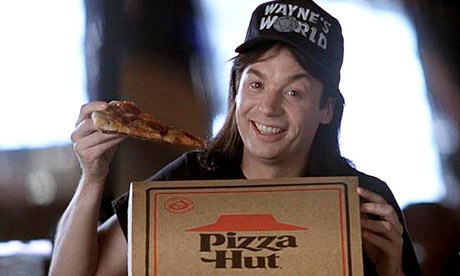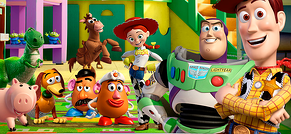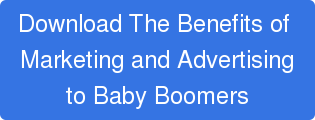Last week’s blog post featured the benefits of cinema advertising. If you missed it or really want to read it again, you can do that here. Similar to cinema advertising is product placement. Product placement is a technique used by advertisers who wish to increase exposure by featuring their products in movies and on television shows. Most advertisers have to pay for product placement, but not Apple; the company simply hands out its products as needed. That’s a pretty sweet deal, and unfortunately, not all advertisers can be so lucky as to score free advertising. They can, however, incorporate product placement into their advertising strategy and achieve results.
Influence consumer preference

Product placement is a form of stealth marketing in that consumers do not realize they are being marketed to from the moment the movie begins until the credits start rolling at the conclusion of the film. Talk about sneaky. Advertisers pay to work their products seamlessly into the storyline and influence viewers who identify with the characters consuming the products on the big screen. If consumers make a connection with a particular character in the film, they might mimic his or her shopping behavior. Good product placement will not seem obvious to viewers, unless of course, they are smart marketers or advertisers like you and me, and it will influence future purchasing decisions unbeknownst to most consumers.
Build brand awareness
Like other forms of advertising, product placement can boost brand awareness. The more an advertiser’s product gets in front of consumers, the more likely they will consciously or subconsciously consider it  when it comes time to make a purchase. Think about the number of times a character grabs his or her phone during a full-length movie or the number of times the character’s car is shown. On that note, can you name the car Daniel Craig, Pierce Brosnan or Sean Connery drove as James Bond? How about Mike Myers as Austin Powers? Every time a brand name or logo flickers across the screen, even if just for a second, consumers become more aware of the product. Brand awareness is becoming increasingly important in today’s crowded marketplace and product placement is one way to help build it.
when it comes time to make a purchase. Think about the number of times a character grabs his or her phone during a full-length movie or the number of times the character’s car is shown. On that note, can you name the car Daniel Craig, Pierce Brosnan or Sean Connery drove as James Bond? How about Mike Myers as Austin Powers? Every time a brand name or logo flickers across the screen, even if just for a second, consumers become more aware of the product. Brand awareness is becoming increasingly important in today’s crowded marketplace and product placement is one way to help build it.
Promote products to engaged consumers
Product placement offers advertisers the opportunity to incorporate their products into entertainment. So essentially, consumers pay to view the advertisements when they purchase their movie tickets. Unlike television commercials which can be skipped or avoided by leaving the room, product placement in movies isn’t so easily ignored. The number of people who close their eyes or skip an entire scene because they don’t want to be marketed to is probably pretty small. Okay, it’s zero. Consumer engagement varies from movie to movie and from person to person, but I’m willing to bet consumers are more receptive to products featured in movies they enjoy.
Below are a few examples of successful product placement on the big screen:
E.T. the Extra-Terrestrial
Let’s test your memory with this one. Do you remember the prominent product placement (whoa, say that  three times fast) featured in E.T. the Extra-Terrestrial? Go ahead, close your eyes and let your mind wander back to Elliott riding his bike in his red zip-up hoodie. Do you see the product that helped Elliot lure E.T. out of the woods? It turns out E.T. and I share a love for Reese’s Pieces. Here’s a shocking tidbit: Mars brand M&Ms turned down the opportunity to be the alien’s candy of choice. That was a poor decision on their part as Hershey’s profits increased 65% following the release of the film.
three times fast) featured in E.T. the Extra-Terrestrial? Go ahead, close your eyes and let your mind wander back to Elliott riding his bike in his red zip-up hoodie. Do you see the product that helped Elliot lure E.T. out of the woods? It turns out E.T. and I share a love for Reese’s Pieces. Here’s a shocking tidbit: Mars brand M&Ms turned down the opportunity to be the alien’s candy of choice. That was a poor decision on their part as Hershey’s profits increased 65% following the release of the film.
You’ve Got Mail
Before Gmail, there was a little something called America Online, or AOL for short. Maybe you’ve heard of it? If you still have an AOL email account (Mom, Dad, Grandma, I’m talking to you), you might want to transition to Gmail. All the cool kids are doing it. I remember logging in to AOL and being welcomed by the familiar “You’ve Got Mail!” which became the title of the 22nd grossing romantic comedy of all time. AOL paired up with Warner Bros. to connect with the romantic comedy audience and try to convince them they could find love using their email service. Okay, maybe that’s not entirely true, but the company got a lot of exposure as a result of this film.
The LEGO Movie
The LEGO Movie takes product placement to a whole new level as the title itself and everything in it is made of LEGO bricks. What child isn’t going to get the itch to play with LEGOs after watching this film? Sorry parents, but it looks like you will be buying LEGOs if you let your kids see this movie. The LEGO  Movie isn’t the first animated movie to sell children’s toys. Toy Story also featured product placement by casting Mr. Potato Head and Etch-A-Sketch as characters; sales increased 800% and 4500%, respectively. The toys fit in so well that it wasn’t entirely obvious they were advertisements which is exactly what good product placement is all about. If your product has what it takes to be a Hollywood star, you should find an agent ASAP.
Movie isn’t the first animated movie to sell children’s toys. Toy Story also featured product placement by casting Mr. Potato Head and Etch-A-Sketch as characters; sales increased 800% and 4500%, respectively. The toys fit in so well that it wasn’t entirely obvious they were advertisements which is exactly what good product placement is all about. If your product has what it takes to be a Hollywood star, you should find an agent ASAP.
After learning some of the benefits of product placement and seeing a few examples, is it right for your brand? Let us know why product placement might or might not work for you in the comments section below.
RELATED POSTS:
- Cinema Advertising Makes it Big at the Box Office
- Online Video Advertising Is On The Rise
- Online Video Advertising: An Effective Component of Your Marketing Mix
- Local Advertising for Dummies
- How Can National Advertisers Reach Local Audiences?
Hannah Hill is a marketing specialist at Mediaspace Solutions. Her marketing experience includes writing, inbound marketing, social media and event management. You can connect with Hannah on LinkedIn, Facebook or Google+.






